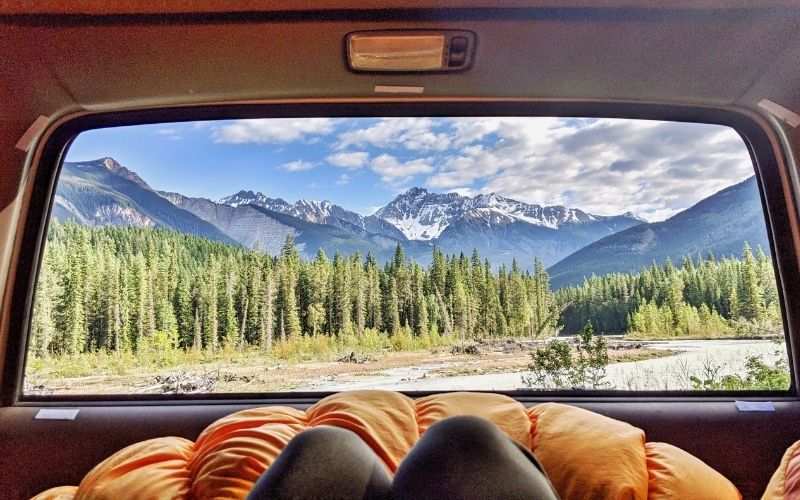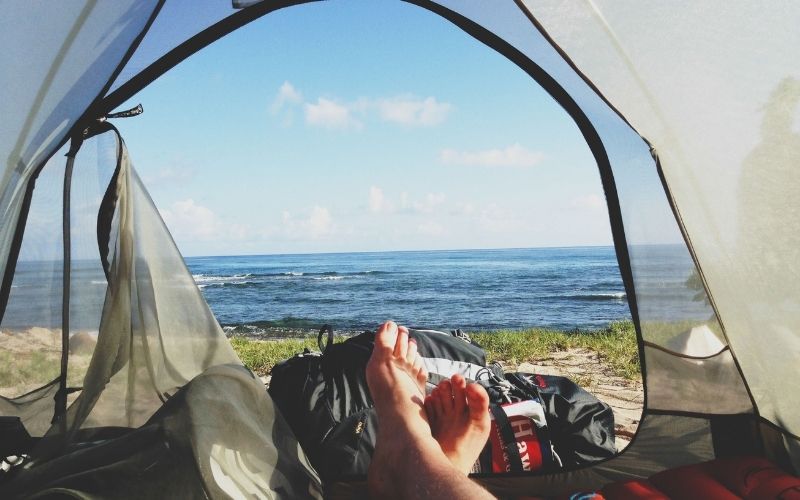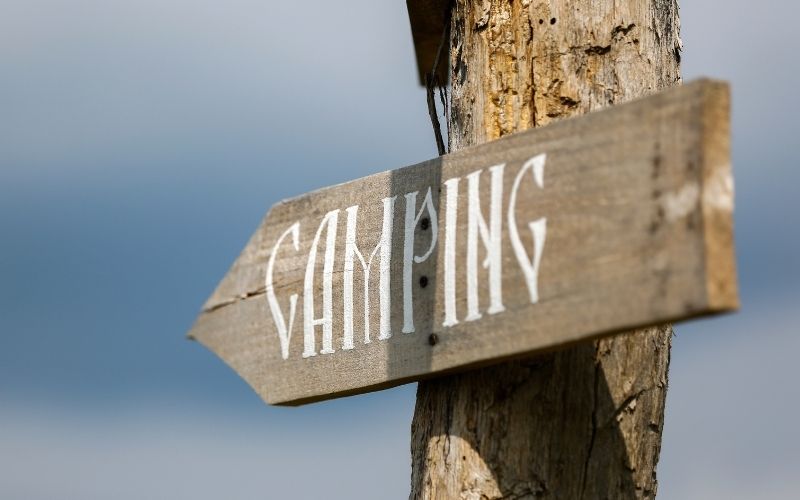Camping is a great way to explore the outdoors and experience nature in a new way. But there are so many different types of camping, it can be hard to choose which type is right for you.
If you’re a beginner, car camping might be best as it’s more affordable than backpacking or other styles of camping that require special gear and skills.
If you have kids, then family-style camping might work well for everyone as they’ll enjoy making memories with their parents and siblings. And if you’re looking to get away from your daily routine but still want some comfort while sleeping on the ground, then luxury campsites are perfect!
In a nutshell the main types of camping that most people are familiar with are five different types. They are car camping, glamping, camping in a tent, wild or cowboy camping and camping in an RV. There are similarities between each type of camping but also some differences too with cost and experience being the two main areas.
1. Car Camping
Car camping is where you pull your car up to a campsite, usually near an electric or water hookup and set up camp with the items in your trunk.
It’s not really roughing it because there are always amenities close by like bathrooms, running water and showers.

All that being said, this type of camping might be best if you’re looking for comfort without all the hassle of lugging gear from place to place.
Car camping can be great for lone style camping if you plan to stay in your vehicle.
There are some people who refer to ‘car camping’ as pulling up at a site and setting a tent up next to the car.
This can be a good option if you have a family, want to stay mobile or you have people in your camping party that struggle with mobility.
2. Glamping
Glamping could best be described as five star camping in a tent.
If you are looking to experience the outdoors, under canvas, without sacrificing too much comfort, then glamping is for you.
In most cases you simply arrive at the campsite and everything is ready for you.
No setting up of the tent, no worry about bedding or other accessories either.
Just pack for your vacation as normal.
Air mattresses, beds with linens and pillows are common. Some glamp sites will even provide you with a hot tub or spa.
Some may also offer perks such as meals cooked by chefs on-site, WiFi access to keep in touch with family members back home and other luxuries that would be typically found at an upscale hotel.
Glamping is less about the struggle of roughing it and more about enjoying all the glamour of camping while still being close to nature.
If you are looking for luxury but still want that close to nature experience then glamping could just what you are looking for.
As you’d probably suspect glamping is one of the most expensive forms of camping.
You can get your own glamping tents some of which you can see here, you’ll need to set them up yourself – or get someone to do it for you of course.
3. Camping in a tent
Camping in a tent is one of the most popular types of camping.
It’s not only inexpensive, but it also provides you with an up close and personal experience with nature that can’t be found any other way.
You’ll need to bring your own gear such as tent, bedding, cooking supplies and food for this type of camping and you’ll need to make sure that you have everything that you need to setup camp.

Being familiar with setting your tent up will be important for when you arrive at the site and you may need to do some ‘test runs’ before embarking on your trip.
There are many campsites to choose from where you can safely camp in your tent and with many of them being off the beaten track in rural areas getting close to nature is not difficult.
You can also throw your tent up in your back yard or garden for a few nights under the stars.
This can be a great way to become familiar with camping and it is also great if you have young children.
They will enjoy the adventure and you are not far from the house if it gets cold or if you need anything from inside.
Camping in a tent can be a great vacation for children, particularly if they enjoy exploring and getting dirty, but be sure to plan for days when the weather could be bad to keep them, and yourself, entertained.
4. Wild or cowboy camping
Wild camping is not the most common type of camping but it definitely has its merits.
For one thing, wild campers do not have to worry about following rules and regulations that many campsites impose while they are out exploring.
There’s a sense of freedom when you’re wild camping as you don’t get tied down by what time people need to leave or where they can go and how far from their tent other tents should be set up.
Wild camping means sleeping in places like forests, fields, wetlands or even on beaches for some parts of the year depending on your location.
Often wild campers get well away from civilisation, exploring remote and hard to reach areas – in the middle of nowhere.
Typical equipment includes things such as a backpack with food and water supplies (as well as cooking gear if there isn’t any natural source), an air mattress or hammock and often a basic tent ( unless you are cowboy camping where you just lie on the floor around a campfire).
Key things when wild camping to consider are:
Having permission to be on the land where you wish to camp
Making sure that it safe to have campfires
Taking precautions against potential attacks by wild animals
Telling someone where you are and having a means of communication
5. RVing or camping in an RV
Whether or not this is real camping is up for debate.
The fact is that RVing is highly popular and makes a good option for those that want to travel around in a home on wheels.
There are many different types of RVs available – for purchase or for hire and, in many cases, the sky is the limit in terms of styles, sizes, features and levels of comfort.
With an RV the weather does not become too much of a problem – wet or cold conditions are easily dealt with as you have a solid roof over your head.
Everything that you need is normally available – you simply pack your belongings into the RV and head off into the wilderness, the only extras that you’re likely to need are a map or sat-nav and some imagination.
Many RVers use purpose made campgrounds that have electrical and water connections. For a fee you can visit these sites and make use of the amenities and services.
There are also those that enjoy getting away from other people and who will drive to remote areas, park up and live in the RV. Sources of power often come from generators or solar panel systems that are purpose made for the RV.
In the RV world this type of RVing is known as ‘wild camping’ – very different to the wild or cowboy camping mentioned above.
RVing is probably the most expensive form of camping. Purchasing an RV is a sizeable investment and ongoing running and maintenance costs need to be considered too.
If you are exploring RV camping then renting an RV from somewhere such as CampingWorld is a cost effective and safe way of dipping your toe into RVing.
Final Words
Camping is a great way to spend time with the family while getting back in touch with nature.
There are many different types of campsites and activities you can enjoy when going out into the wilderness.
The important thing to remember is that there isn’t one right answer for everyone; it all depends on your personal goals and desires.
For example, if your goal is to go as far off-the-grid as possible then primitive or rustic camping might be best for you.
If you want more amenities like power outlets, bathrooms, running water etc., then traditional tent campgrounds would work better for you.
Just think about what type of experience will make your trip enjoyable before heading out so that no matter where you go, you’ll be able to have the best time.







